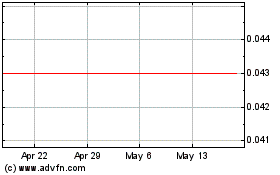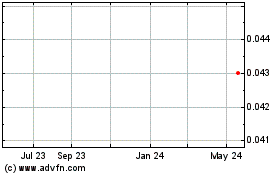China Shares Fall Into Bear Territory--Update 2
January 15 2016 - 3:07AM
Dow Jones News
By Chao Deng
China's main stock benchmark entered a bear-market Friday,
following a deep afternoon selloff that dragged markets in the rest
of the region lower.
The Shanghai Composite Index fell 3.6% to 2900.97. The index has
fallen 20% from its recent high, the definition of a bear market,
reached on Dec. 22.
Elsewhere, Hong Kong's Hang Seng Index was down 1.4%,
Australia's S&P/ASX 200 fell 0.3% and South Korea's Kospi
slipped 1.1%.
Traders and analysts attributed the sharp selloff to a Chinese
state-run media outlet's report that some Chinese banks were no
longer accepting stocks as collateral for loans. The Chinese bank
regulator didn't immediately return a call for comment.
The prospect that liquidity could be drying up raised concerns
among already-nervous investors about the outlook for the market,
despite a rebound the previous day.
If banks have stopped accepting loans as collateral "it will
further tighten liquidity in the market and create panic selling,"
said Steven Leung, director at UOB Kay Hian in Hong Kong. "The news
is very confusing."
Meanwhile, the Hong Kong dollar, which is pegged to the U.S.
dollar, fell to as weak as 7.7987 to one U.S. dollar. It has fallen
0.5% in two days, its biggest two-day fall since 1986.
The afternoon selloff in China's main stock exchange followed
Beijing published data that showed demand for bank loans in the
world's second-largest economy remains weak. Meanwhile, Chinese
banks remain wary of boosting lending to businesses.
Data from the nation's central bank showed earlier Friday that
Chinese banks issued 597.8 billion yuan ($90.7 billion) of new yuan
loans in December, down from 708.9 billion yuan in November and
below the 700 billion yuan forecast made by economists polled by
The Wall Street Journal.
After two weeks of selling that drove the Shanghai index down
18%, investors said they would look for answers at a routine weekly
briefing by China's stock regulator to be held later Friday.
The renewed bout of volatility in China added to investors'
concerns about slowing growth in the rest of the region during the
Asia day. Oil prices, which rose overnight, turned lower. Brent
crude oil last down 1.5% at $30.43 a barrel.
The move cut into energy gains earlier in the region: In Hong
Kong, energy stocks fell 3.3%. The sector was up just 0.4% in
Australia.
"There's nothing really out there giving people encouragement,"
said Andrew Sullivan, managing director at Haitong International in
Hong Kong.
Early Friday, China's central bank set the yuan at 6.5637 to one
U.S. dollar, marking the sixth-straight session it has guided the
currency roughly steady.
In the freely traded offshore market, the yuan traded at 6.6162
to one U.S. dollar, up 0.3% from the previous day. Onshore, where
the yuan can trade up or down 2% from the central bank's daily fix,
the currency traded at 6.5866, roughly unchanged from the previous
day.
The Japanese yen was up 0.2% at Yen117.85 to one U.S. dollar.
The local currency has gained 2% year-to-date, as turmoil in
Chinese and global markets have sent investors to rush for
safety.
The Indonesian rupiah strengthened 0.1% to 13,895 to one U.S.
dollar. The currency had fallen as much as 1% on Thursday after
news of explosions in the Southeast Asian country's capital city of
Jakarta, although it recovered slightly after suspected government
intervention following a rate cut by the central bank.
Gold prices were up 0.4% to $1,078 a troy ounce.
Shen Hong contributed to this article.
Write to Chao Deng at Chao.Deng@wsj.com
(END) Dow Jones Newswires
January 15, 2016 02:52 ET (07:52 GMT)
Copyright (c) 2016 Dow Jones & Company, Inc.
Liquefied Natural Gas (ASX:LNG)
Historical Stock Chart
From Feb 2025 to Mar 2025

Liquefied Natural Gas (ASX:LNG)
Historical Stock Chart
From Mar 2024 to Mar 2025
